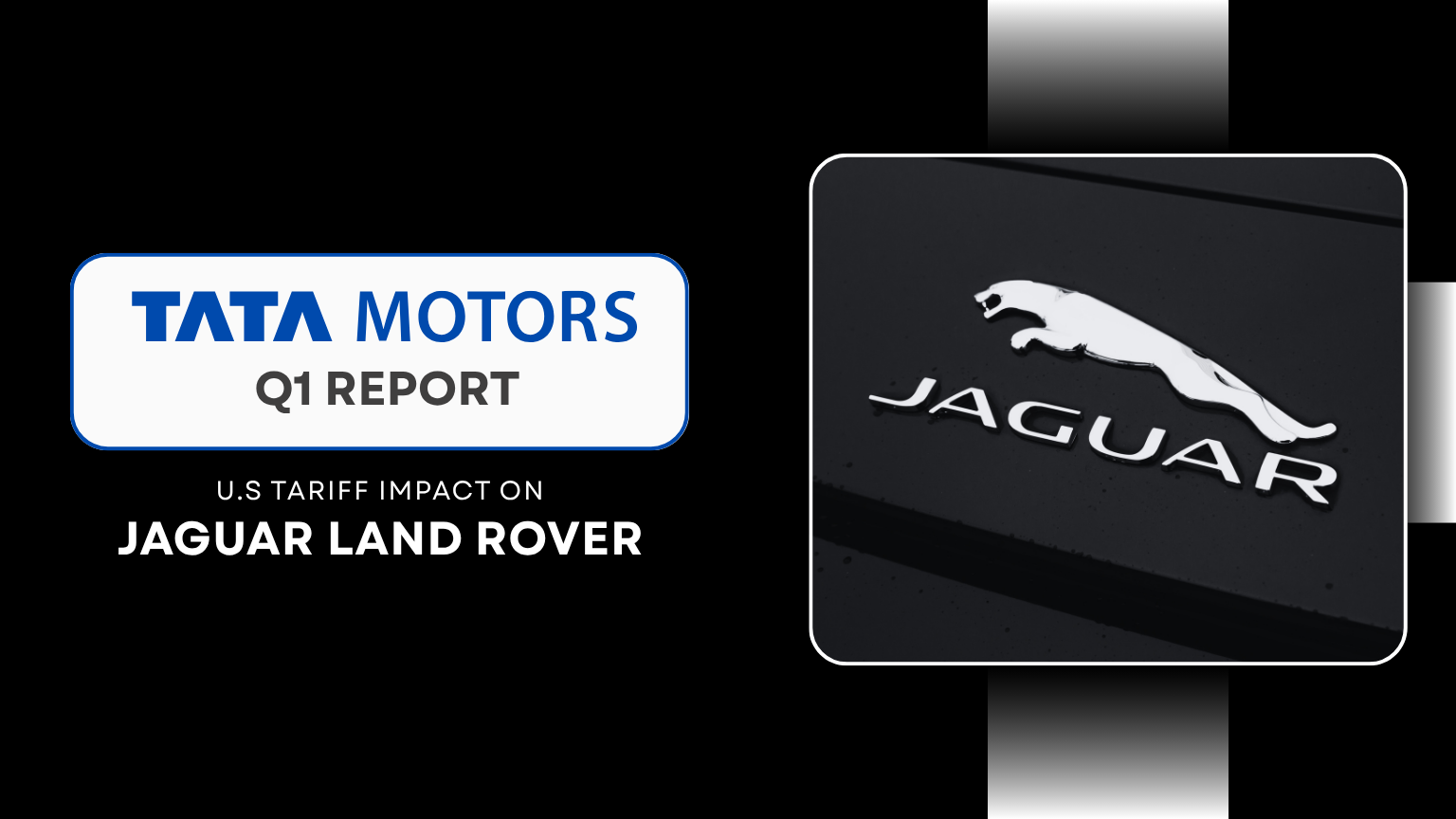A luxury car enthusiast in London settled into the driver’s seat of a sleek Jaguar I-PACE for a test drive. The soft hum of the motor felt like a promise, quiet, confident, and effortless. It was a pure joy, contrasted sharply with the business reality as U.S. tariffs had eaten into JLR’s profits this quarter.
Tata Motors Ltd. posted a 30.46% drop in consolidated net profit for the first quarter ended June 30, 2025, at ₹3,924 crore compared to ₹5,643 crore a year ago. Revenue slipped 2.45% YoY to ₹1,03,792 crore, pressured by weak domestic demand and global headwinds.
Group CFO P.B. Balaji said the company remained profitable “despite stiff macro challenges” and looked to accelerate performance as tariff clarity emerges and festive demand builds ahead of its October 2025 demerger.
Jaguar Land Rover (JLR) and U.S. Tariff Impact
The spotlight of Q1 was on Jaguar Land Rover (JLR), which recorded its 11th straight profitable quarter, but saw revenue drop 9.2% YoY to £6.6 billion. The hit came mainly from new U.S. trade tariffs and the planned wind-down of legacy Jaguar models.
EBITDA margins fell to 9.3%, while Profit Before Tax plunged 49.4% YoY. The company expects relief in the coming months as the U.S.-U.K. trade deal reduces tariff-related costs.
Commercial Vehicles Performance
Tata Motors’ Commercial Vehicles business faced a 9% drop in domestic volumes due to market softness and delayed fleet replacements. However, exports surged 68% YoY, providing a much-needed boost. Revenues declined 4.7% YoY.
Executive Director Girish Wagh highlighted resilience in buses and vans, even as the domestic market remained sluggish.
Passenger Vehicles and EV Sales
The Tata Motors passenger vehicle business experienced flat growth in the first quarter of FY26, with wholesale volumes decreasing by 10.1% amid an industry slowdown and transitions in models such as the Altroz, Harrier, and Safari.
Revenues dropped by 8.2% YoY, and EBITDA margins slipped to 4.0%. On a positive note, Tata Motors’ electric vehicle (EV) sales performed well, bolstered by the launches of the Altroz. EV and Harrier. EV, both of which garnered strong initial customer interest.
Managing Director Shailesh Chandra highlighted that EVs are gaining traction, driven by new product offerings and increasing consumer awareness.
Festive Demand Could Drive H2 Recovery
Despite the challenges faced in Q1 stemming from U.S. tariffs, weak domestic passenger vehicle demand, and softer global markets, Tata Motors is preparing for a stronger second half of FY25. The company expects that festive demand, new product launches, and easing trade pressures will enhance performance following the demerger.
With a focus on innovation, particularly in the electric vehicle segment, Tata Motors aims to capitalise on its strengths in commercial vehicles, passenger vehicles, and global exports to regain momentum.
Stay ahead of market moves, subscribe to our updates and never miss key earnings, market shifts, and auto sector insights.











